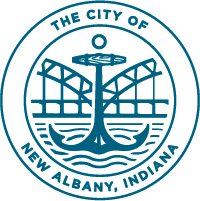New Albany Municipal Utilities Moving to More Accessible Location
/The New Albany Municipal Utilities (NAMU) will be moving into a more convenient and accessible location for customers in February. NAMU currently is on the third floor of the City-County Building located at 311 Hauss Square, and oversees the billing services for all municipal utilities, including sewer, stormwater, and trash services.
NAMU is moving to the first floor of the newly rehabilitated former News and Tribune building at 303 Scribner Drive effective Monday, February 6th. The building was recently rehabilitated by local developer Matt Chalfant. The move will be completed on the weekend prior to opening, as to not interfere or negatively impact customer service.
The office will be located on the first floor of the building, with a convenient parking lot, dedicated handicapped-parking spaces, and on-street parking available. Additionally, residents will not have to go through metal detectors or a security gate simply to pay their bill or get a question answered from the department.
“This will be a much more convenient and accessible location for residents who need to visit our offices, whether to pay a bill or solve an issue,” stated April Dickey, Billing Director for the department.







